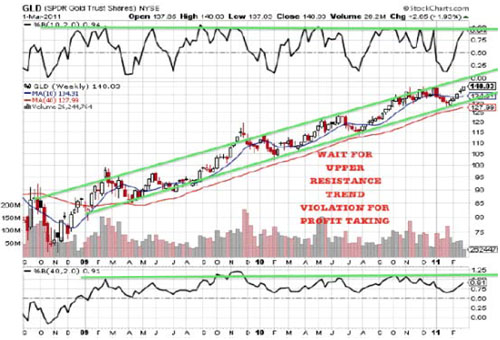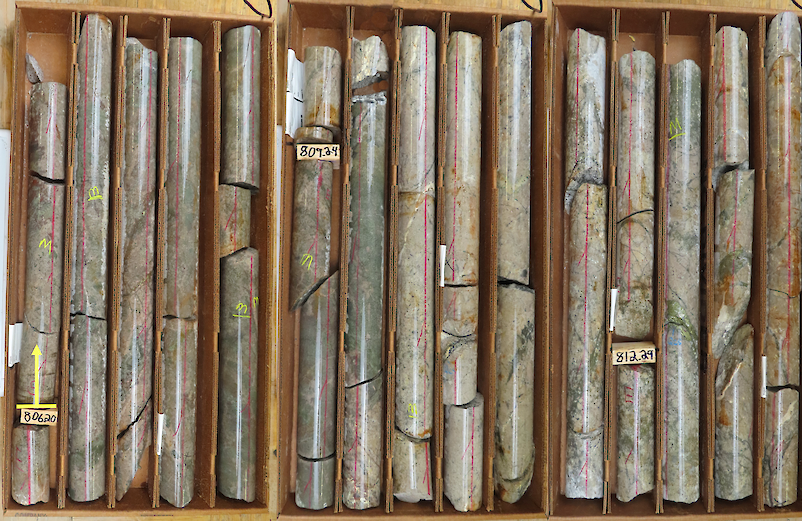The million-dollar question: Stampede or showdown? Will gold and silver continue to stampede into new highs making considerable gains or will the struggling dollar reaching record lows make a showdown, putting a ceiling on the precious metals rise?
Some naysayers claim that there is a danger of gold and silver rising into areas that may be considered a blowoff and that risk of a severe downturn is too high. The price of silver has been reaching areas that exceed the squeeze engineered in 1980 by the Hunt Brothers. It is true gold is entering new record territory and there may be areas of profit taking, but one must not deny that 2010 was a major breakout year for silver, proving that the long-term silver bulls have been right.
The true believers argue that there are too many positives going for silver at this time. We know that it is a truism that in times of political and economic instability silver represents a storehouse of value. Moreover, silver is profiting from soaring global inflation rates and political fever on the rise in the Middle East and North Africa. Silver also serves as an industrial metal with more than half of its demand driven by manufacturing. Electronics and solar power areas are active users of silver and are fueling the rise in demand for the precious metal.
Silver's critics rebut that technically silver futures are moving into overextended territory. Compared to gold, the small size of the silver market renders it more volatile than the yellow metal. This results in historically greater volatility, causing soaring rallies and breathtaking corrections than might be seen in gold. Silver has often been called poor man's gold. This demonstrates that the average investor is being driven to hedge with precious metals. This places downward pressure on the gold-silver ratio. Investors are seeking to own hard assets. Silver is caught up by the tensions in the Middle East and the fear on inflation. The desire to own precious metals and lack of faith in their own currencies throughout the world is an important factor in the flight to silver. The possibility that central banks may be caught by their maintenance of zero interest rates represents the go-ahead signal for silver.
The current economy is not healthy despite the largest monetary debasement in modern history. The deficit is more than 10% of GDP. This has been a long-term trend over many years. We are spending more than we are making. It does not take a rocket scientist to realize that we are headed down the wrong path, especially in light of seeing the sovereign debt crisis take down the financial markets in May of 2010.
The summer correction started with the flash crash in May and ended with QE2 being announced in August. This commitment by central banks to an unconventional last resort monetary policy named quantitative easing sent hard assets into record territories. What did this economic steroid do for the economy? Although traders of stocks and commodities have greatly benefited with rapidly rising asset prices, outside of this arena many are still suffering. Nearly two years of record stimulus and dollar debasement has not helped unemployment. There are less jobs now than in 2007 in the United States. Unemployment is putting a weight on the recovering housing market. Increased geopolitical tensions in the Middle East have caused a jump in oil prices, influencing a selloff in equities. One must remember that an increase in oil prices is an extra burden on consumers and businesses.
Investors are jumping into precious metals as a safe haven, causing record breakouts. The dollar on the other hand has shown no interest from safe-haven buyers. The dollar, which proved to be a safe haven during 2008, has not been showing similar characteristics in 2011. Many investors are concerned about a repeat of 2008, where commodities and precious metals suffered a severe decline along with the markets. It is my belief that 2011 is different as evidenced by the recent decoupling of gold and the dollar as a safe haven.
Central banks are addicted to quantitative easing. There are no exit strategies as long as unemployment does not improve. In 2008, it was not known that these drastic measures and spending packages would be adopted. This is the worst it has looked for the U.S. dollar in years and precious metals are decoupling from fiat currency. This may be the beginning of the great flight into the safety of hard assets as fiat currencies struggling with record deficits lose their value. Quantitative easing has never been successfully used before. It may work in the academic world, but in the financial world it is causing a dollar debasement exacerbating fragile geopolitical issues globally. The only precursor of quantitative easing to my knowledge is Japan, which has used it since 2001. Japan is still in a recession and suffering with sovereign debt issues.

As the media and the general public catch on to the precious metals trade, I will be looking to secure trading profits. We are not there yet, but one must monitor when and how to capitalize on this major gain from my late January buy signal and not get caught up in the coming hysteria.
Jeb Handwerger
Gold Stock Trades



































